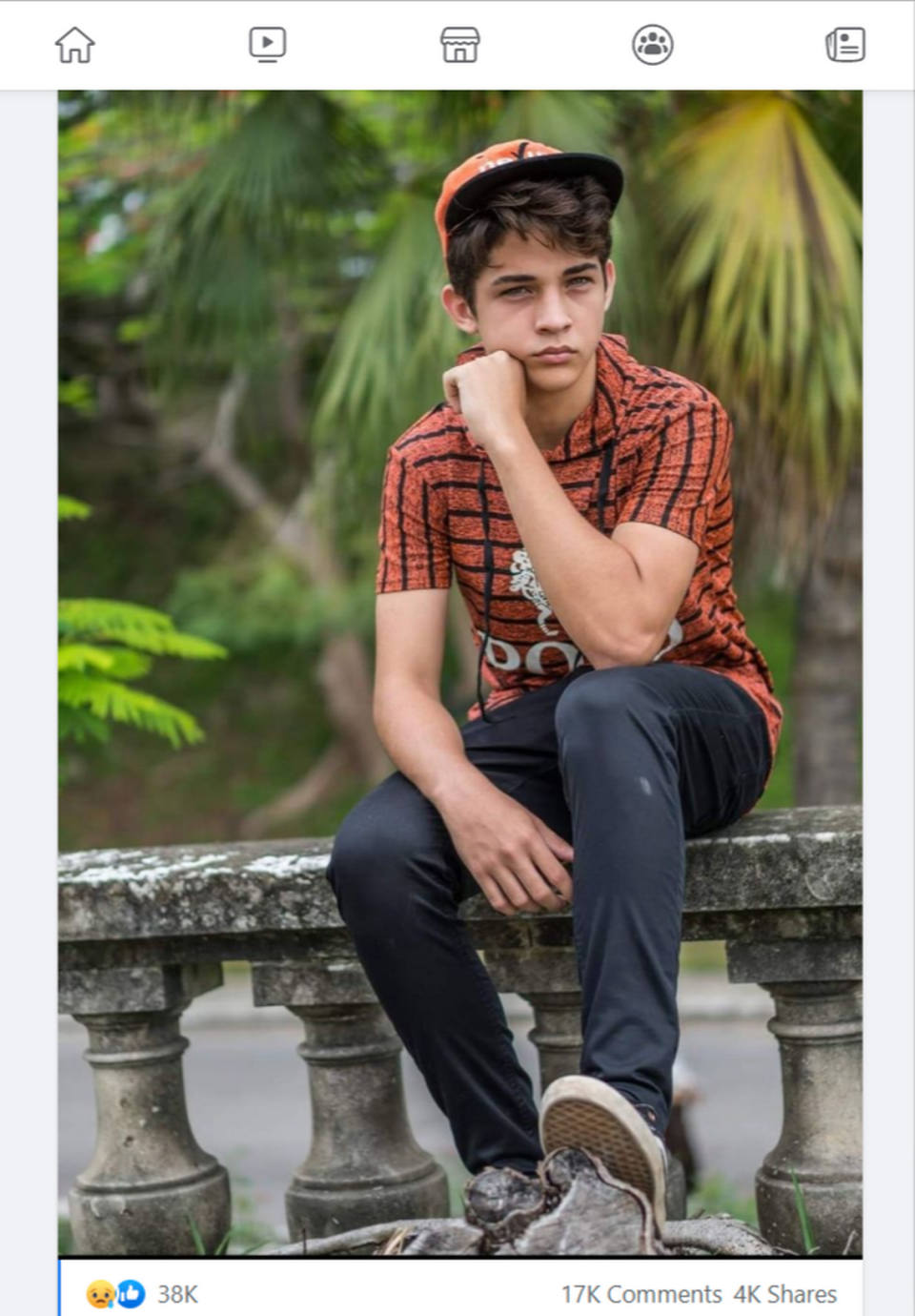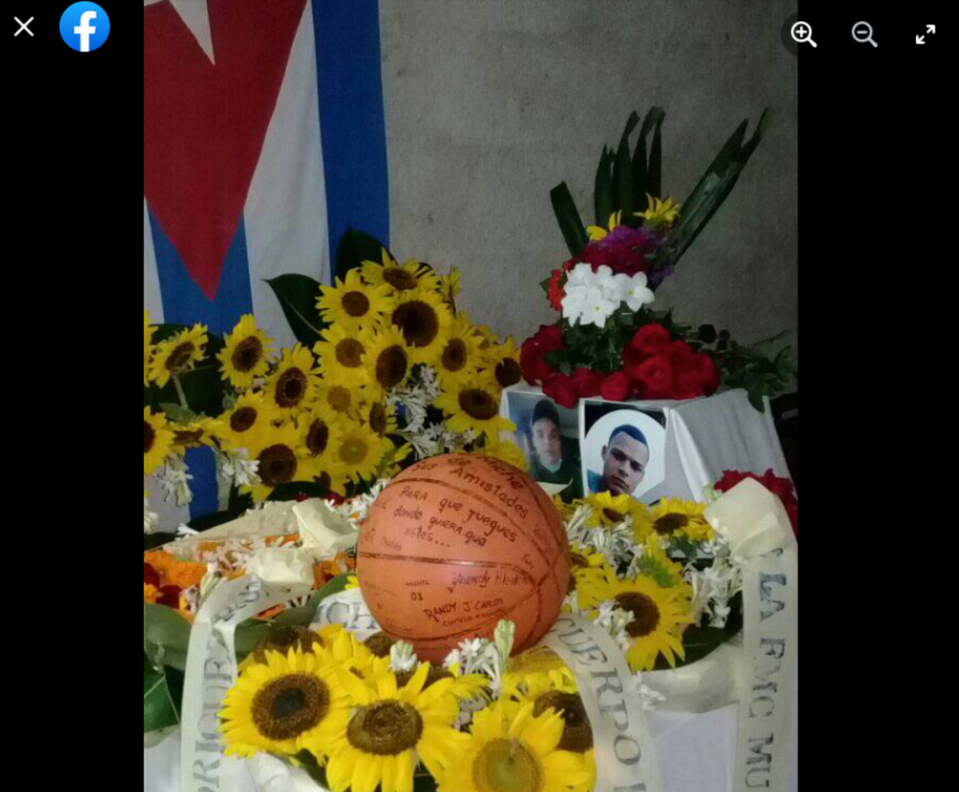Deaths of young recruits cast a shadow on Cuba’s claimed victory over Matanzas fire
One wanted to be a neurosurgeon and was a Real Madrid soccer fan. Another one loved to play basketball. A third one liked to pose for selfies to show off his tattoos.
One by one, the faces of young Cubans who likely died while combating a fire that started last week at an oil storage facility in the port of Matanzas have been popping up on social media this week. They are among 14 people Cuban authorities said are missing but have yet to be officially identified.
At least four – Leo Alejandro Doval Pérez de Prado, Michel Rodríguez Román, Adriano Rodríguez Gutiérrez and Fabián Naranjo Nuñez — were in the midst of their compulsory military service and had little experience as firefighters, according to accounts of families and friends on social media.
They were all very young and full of dreams, their relatives lamented. And now they are gone, prompting a flurry of questions about why authorities sent them as first responders to one of the most dangerous fires in Cuba in several decades.
“Who is going to take responsibility for bringing those inexperienced kids to such a dangerous scene?” asked Yanelys Naranjo González, a relative of Fabián Naranjo Nuñez, on Facebook. “Who ordered that they remain in the red zone where the flames could reach them if the scope of the fire grew, as it did?”
She said Naranjo Núñez was doing his military service in the Varadero airport firefighting brigade.
A Red Cross brigade that has been working on the fire site paid tribute in a minute of silence in front of his house in Matanzas on Thursday, one of the brigade members, Esteban Grau, said on Facebook.
The government has not said who was ultimately in command of the response efforts at the fire site. Given the lack of accountability that high-ranking military officials usually enjoy in Cuba, and how the government is already framing the disaster response as successful, it is unlikely that the questions posed by the families will be answered with an independent investigation.
On Friday morning, government officials said the fire that engulfed half of the oil storage capacity at the Matanzas supertanker base was extinguished, a feat described by Cuba’s leader Miguel Díaz-Canel as “epic” and a “victory.”
While Cubans have welcomed the news, the triumphal tone in the government’s statements and state media coverage struck a nerve among those concerned with the fate of the young recruits.
“Let’s all say No to Compulsory Military Service in Cuba,” Leonardo Fernández Otaño, a Cuban historian and activist who lives in Havana, wrote on Twitter. “Not another broken dream.”
No solamente porque la vida de un joven peligra en mano de Militares... También en ese tiempo se pierden las energías mas valiosas y se posponen sueños y deseos que corren igual riesgo de perderse para siempre.#NoAlServicioMilitarObligatorio en #Cuba pic.twitter.com/yU4YhMxDb8
— Julio Llopiz-Casal (@jllopizcasal) August 11, 2022
“The fire did not kill them; they were killed by the Compulsory Military Service,” wrote Amilcar Perez Riverol, a Cuban scientist based in Germany. “They died fulfilling an absurd Law. Enough of child martyrs.”
Many started sharing the hashtag #NoAlSevicioMilitarObligatorio — No to mandatory military service — including Manuel Alejandro Marrero, the son of the country’s Prime Minister, Manuel Marrero. According to a report by the independent news site ADN, he posted the message in an Instagram story, a feature that allows users to post content that vanishes in 24 hours.
‘I don’t want you a hero!’
Leo Alejandro Doval Pérez del Prado, 19, was strikingly handsome, the pictures posted by his aunt Yunia Doval on Facebook show. He had just graduated from high school and was hoping to enroll in medical school soon. Students accepted to universities get their military service reduced from three years to one.
But Doval said it was his values that she would miss the most, describing him as “caring,” “noble,” and “brave.”

“I don’t want you a hero, my boy; I prefer you a coward! Why did it never occur to me to tell you?” she said in a tribute on Facebook. “I always admired your values, and we know that you are not one of those who run, but I didn’t imagine that today, I would have preferred that you did.”
Reached by the Herald by phone, a relative who asked not to be identified said family members were not in a condition to speak to the media. “We are all devastated,” the person said.
Michel Rodríguez Roman, 20, another recruit working as a firefighter, was reported among those likely deceased by two state media journalists and family members.
“At only 20 years old, he becomes a hero, adding to the list of our glorious martyrs,” wrote journalist José Luis Guzmán Cuza.
His uncle, Alexis Roman, posted a picture on Facebook of tributes in memory of his nephew. Among the flowers, a basketball was signed with messages from his friends. One reads: “So you can play wherever you are.”

How did they die?
So far, Cuban authorities have confirmed the death of two firefighters, 60-year-old Juan Carlos Santana Garrido and 24-year-old Elier Correa Aguilar. The latter had been reported in a critical state “with burns incompatible with life,” the Ministry of Public Health said. Correa Aguilar was buried in the city of Bayamo on Thursday.
According to accounts of state media journalists, firefighters and Red Cross personnel who survived, the 14 missing firefighters likely died after one of the two tanks burning cracked and collapsed at some point between 4 a.m. and 5 a.m. on Saturday.
Photos taken by photographer Vladimir Zayas and published by Bohemia magazine on Saturday morning captured what the publication said were exclusive images “of Friday, before the second explosion at the supertanker base in Matanzas.”
The pictures have been widely used by government accounts and state media to illustrate the bravery of those firefighters that initially fought to contain the flames, calling them “heroes.”
But the images also show how dangerously close to the flames they were.
#BohemiaComparte | #ExplosiónMatanzas
Bohemia comparte imágenes exclusivas que nos llegan del viernes antes de la segunda explosión en la base de Supertanqueros en la provincia de Matanzas. pic.twitter.com/tKPhMTXyat— Bohemia (@bohemia1908) August 7, 2022
Bohemia identified Andy Miguel Ramos Sotolongo as one of the firefighters in the pictures. He is also among the missing.
“Seconds before the collapse of the first tank, I noticed that the flames were growing. I had worried a little about the speed of the wind and that caught my attention,” Zayas, a photographer and firefighting volunteer from Havana, told Bohemia.
“I took the opportunity to take some photos because, with the flames so vivid better images came out, but suddenly I saw that the tank that was burning began to crack and fuel was coming out of it. The flames grew terribly, and the chiefs gave the evacuation order. Everyone had to get out of that area.”
He said he started running and took cover behind a fuel tank 200 meters away. It was very hot, and the sky was so brilliant “as if there had been a very strong sunlight,” he said.
He saw firefighters and members of the Red Cross struggling to get to safety. After a while, he and others tried to devise a plan to rescue the victims, but the high temperatures made it “impossible,” he said.
Frank Lorenzo Acosta Ferrer, in charge of a company in the Havana Firefighters Brigade, was also at the site at the time of the explosion and provided a similar account of the events.
He felt the worsening heat and saw the tank crack. He was just 20 meters away, he told Bohemia.
“It was a matter of seconds,” he said. “Since the flame was no longer in the container, it began to grow and revive itself with the oxygen. Seeing that [it had started] to scorch the other tank, everyone ran out. Those who were 60 and even 100 meters from the place suffered burns; imagine those of us who were closer.”
While running, he said, he saw his boss falling, and he tried to go back to rescue him, “but it was impossible. My equipment was burning.”
At some point, he said, he fainted because of the lack of oxygen.
By 9:30 a.m. Saturday, Cuba’s president’s office reported 17 missing firefighters. Two were later located in hospitals, and the body of Santana Garrido was recovered on Saturday.
On Friday afternoon, Cuba’s public health minister, Jose Ángel Portal Miranda, said seven forensic medical teams entered the scene of the fire Friday morning and retrieved “the first bone remains belonging to four different people.”
Follow Nora Gámez Torres on Twitter: @ngameztorres

 Yahoo Movies
Yahoo Movies 
